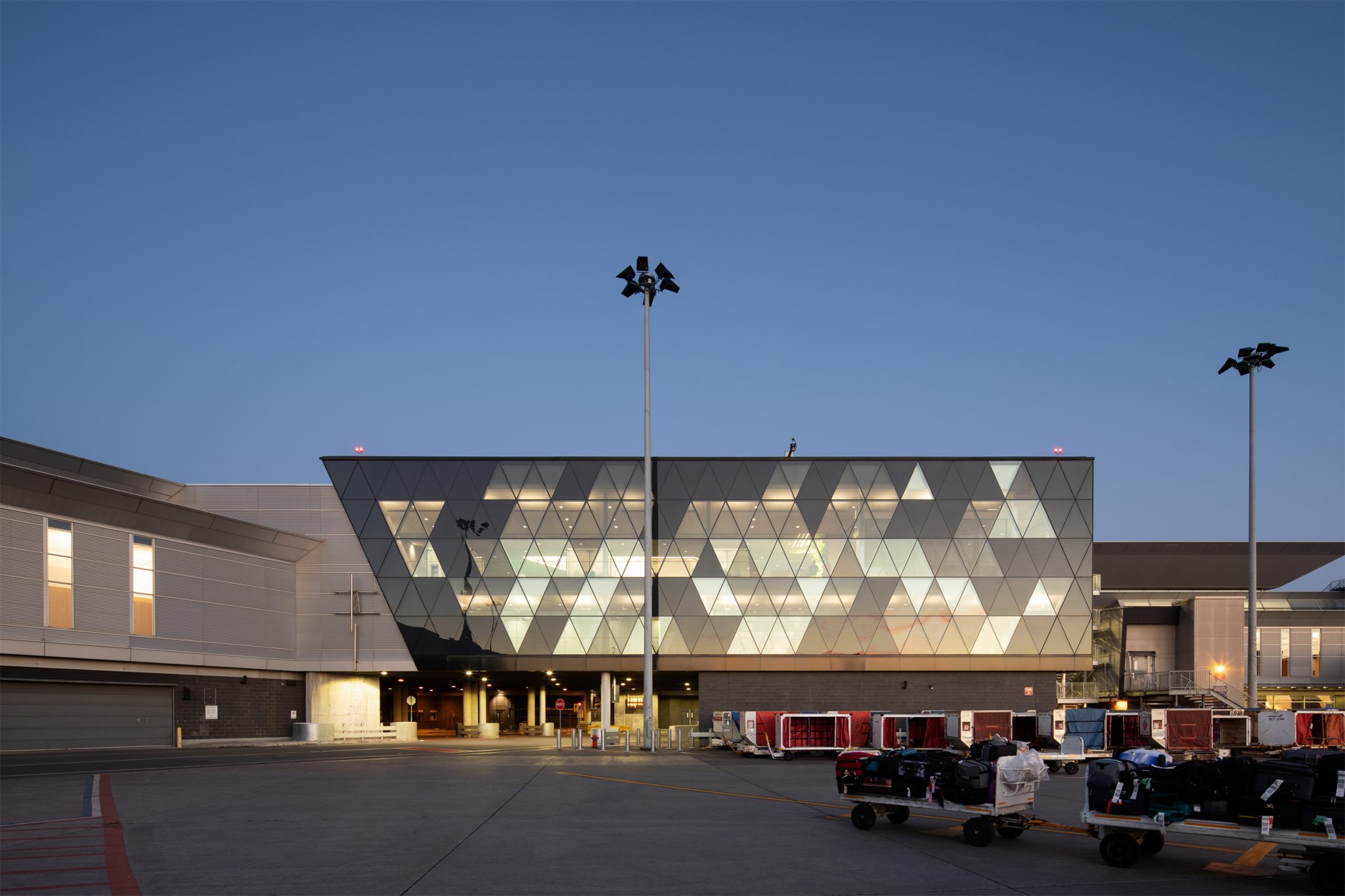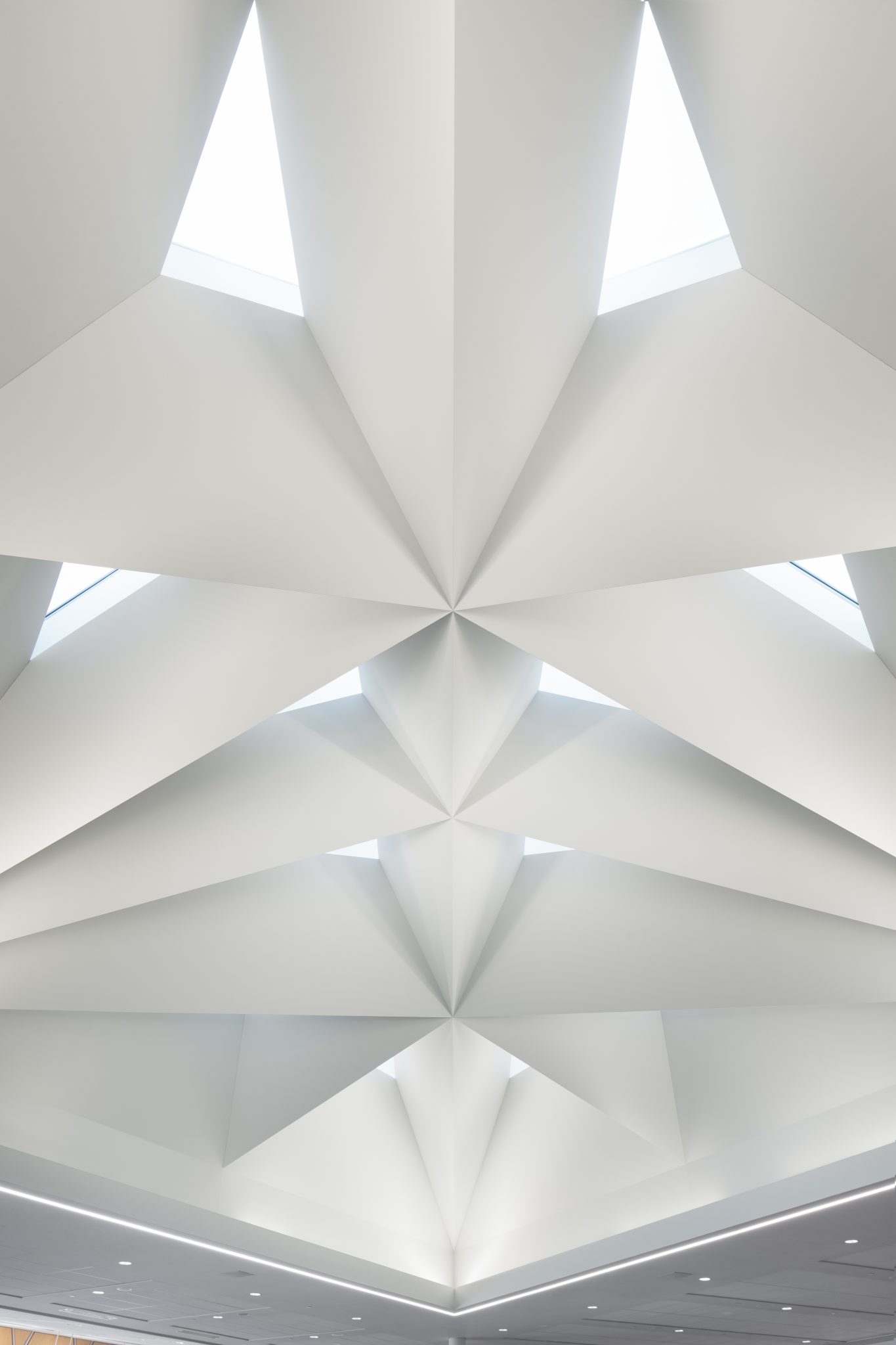Montreal airport elevates experience with light, local materials

Designed as part of Montreal-Trudeau International Airport’s (YUL) long-term vision, a newly completed transit connection centre now enhances the experience for passengers passing through the city without entering it.
The centre separates travellers in transit from those arriving at their destination, expediting border control and creating a streamlined, efficient path through customs.
Located at the intersection of YUL’s three concourses—international, domestic, and transborder—the two-storey facility is connected to both arrivals and departures. The space is bathed in natural light, thanks to a 23.5- x 13.5-m (77.1- x 44.3-ft) skylight positioned above the Primary Inspection Kiosk (PIK) area, and a generous curtain wall overlooking the aircraft parking area.

The centre integrates with the existing airport, while distinguishing itself by the special treatment of its facades. Inspired by the convergence of global travellers, the design features a dynamic triangular grid across the facade, columns, and skylight geometry. The facade is representative of the Canadian Shield’s landscape, characterized by dense forests, rocky outcrops, and vast expanses of water, which is echoed in material choices such as Atlantic Black granite flooring and birch wood wall cladding.
Contributing to thermal comfort and passenger well-being, a green wall connected to the mechanical ventilation system helps maintain indoor air humidity. Meanwhile, a solar wall on the south facade preheats the incoming air, contributing to passenger comfort and overall energy efficiency.
While the first phase of construction was inaugurated in 2019, the centre was completed in 2025. The project was delivered by Aéroports de Montréal with architecture by Jodoin Lamarre Pratte architectes. Key contributors included EXP (civil engineering), NCK (structural engineering), Tetra Tech (electromechanical engineering), AtkinsRéalis (telecommunications), and the general contractor, Pomerleau.


